AMD brings serious RDNA 2 graphics power to its new Ryzen 6000 mobile CPUs
Double the graphics performance and 1.3x faster processing over previous Ryzen mobile generation, says AMD.
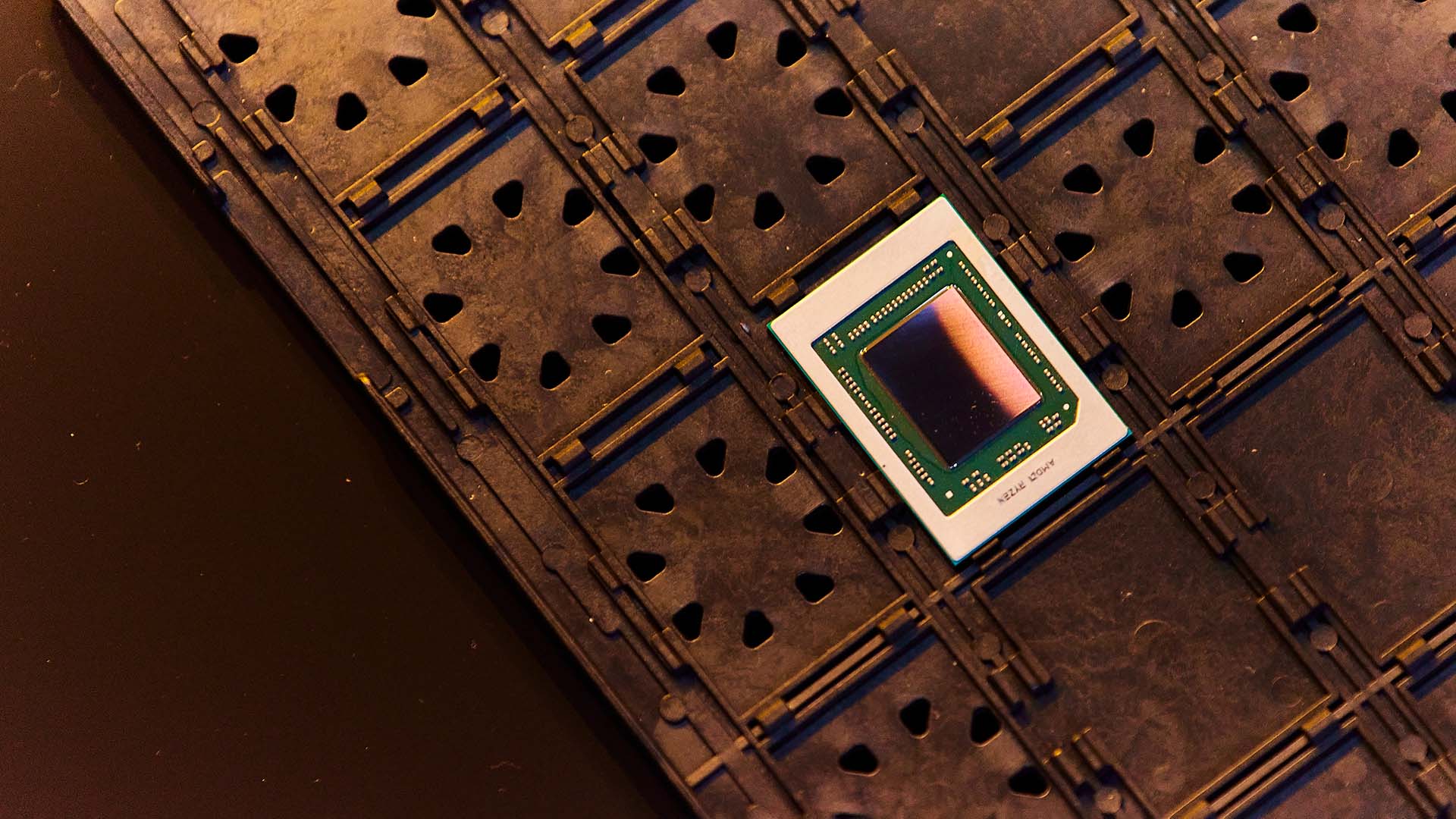
AMD just launched brand new AMD Ryzen 6000 H-series processors for mobile, which look seriously powerful for gaming on-the-go. The new chips incorporate RDNA 2 silicon, the same architecture powering AMD's great RX 6000-series GPUs, alongside an improved Zen 3+ core architecture, with tweaks for performance and battery saving.
All sound good? For us gamers it's the RDNA 2 graphics onboard that should have you really excited. AMD says the new onboard graphics delivers 2x the graphics power of previous Ryzen 5000 mobile chips, and that this RDNA 2 chip at its best can deliver faster performance than Intel's Xe graphics with Tiger Lake or Nvidia's discrete MX450 GPU. Big claims, though we'll have to put all this to the test to be sure.
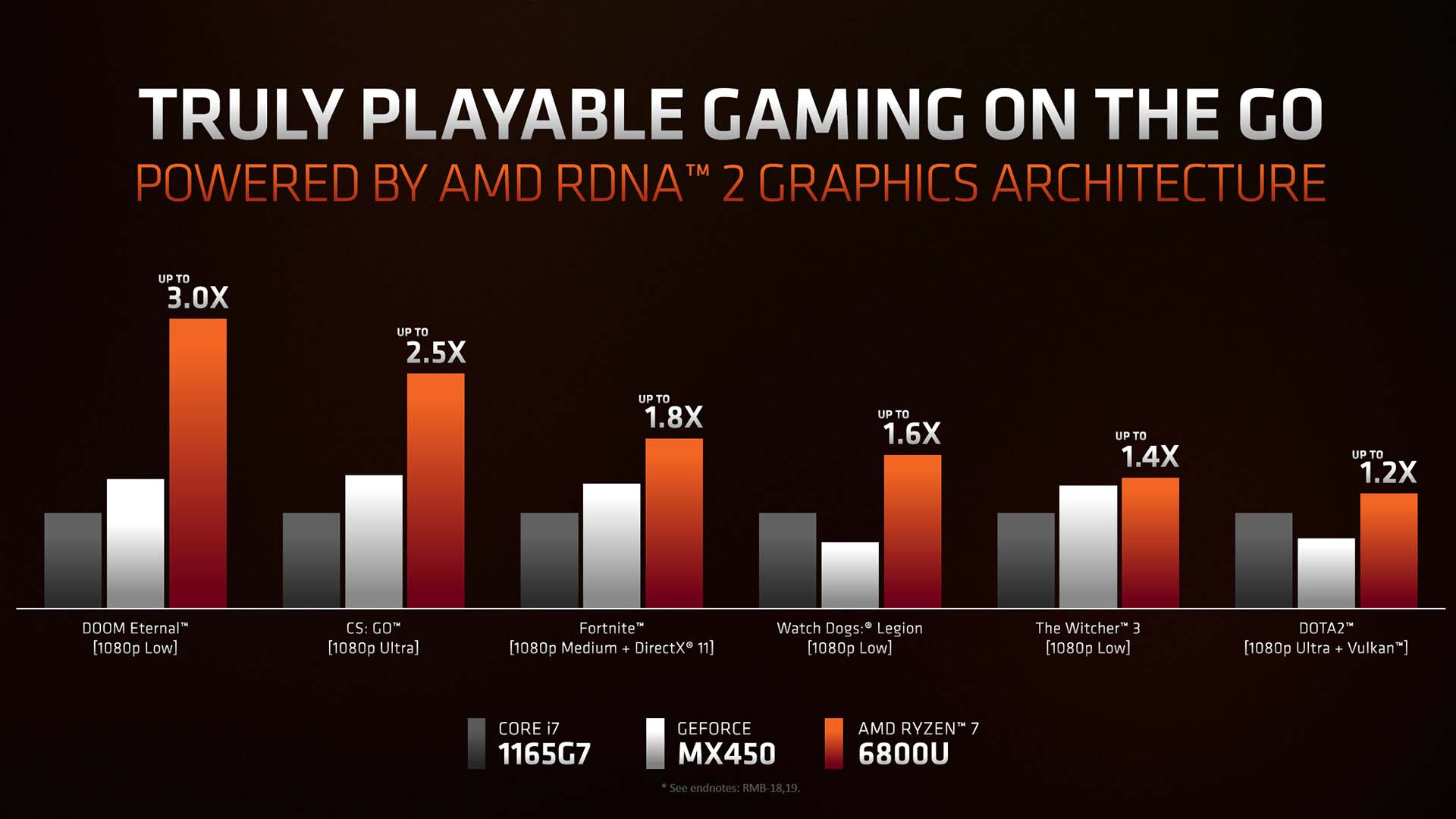
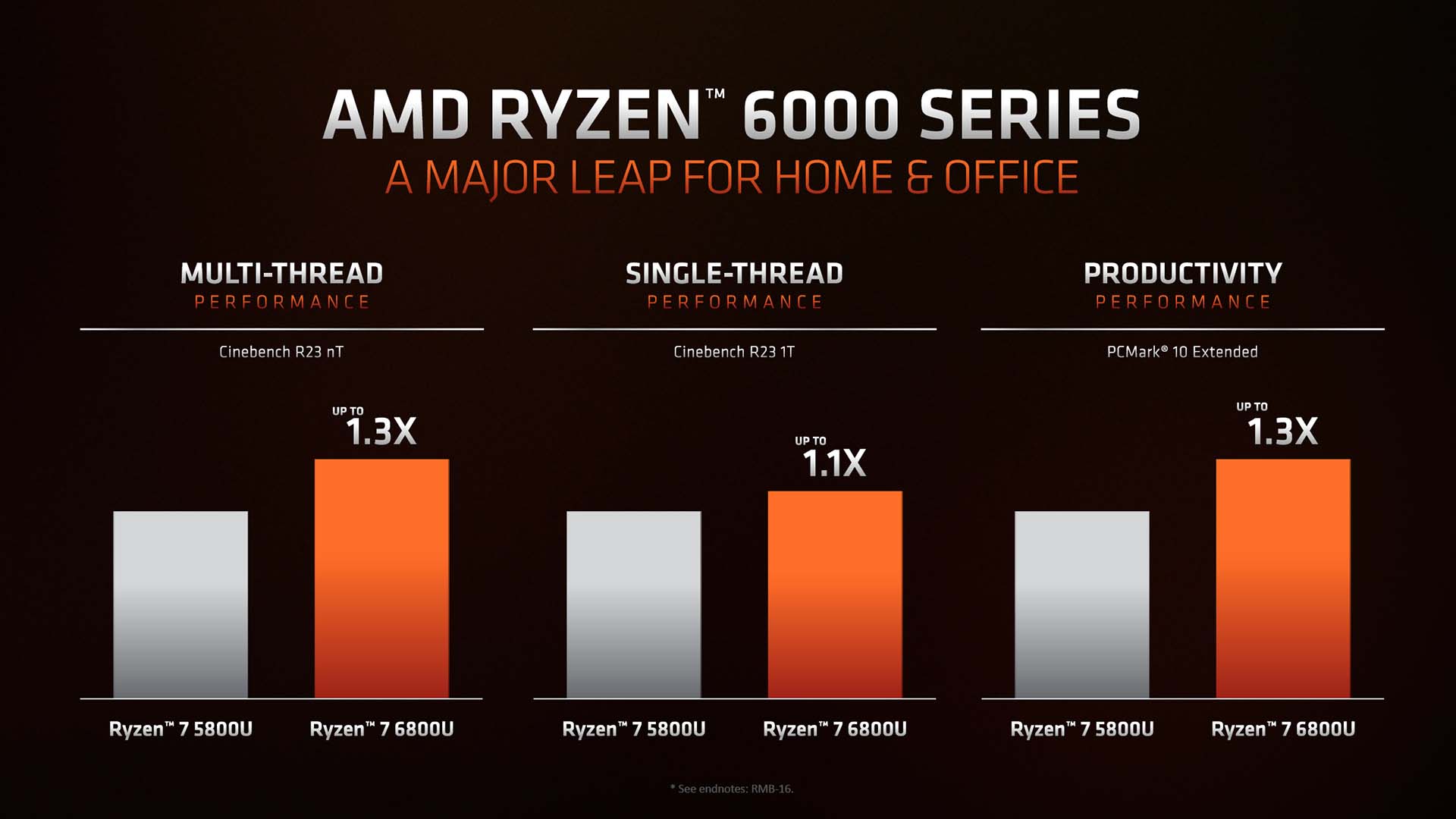
That RDNA 2 GPU will feature up to 12 CUs, and will be capable of running up to 2.4GHz frequency. Not too bad for a mobile part, it must be said. From the diagram provided by AMD it doesn't appear that Infinity Cache is making its way to the mobile world, but perhaps that may not have such an impact on performance for the smaller chip anyways.
Since these mobile chips are stuffed with the RDNA 2 architecture, Ryzen 6000 technically supports hardware ray tracing too, though I wouldn't want to put my laptop through that sort of ordeal.
Beyond the graphics, you've got a more efficient and secure CPU architecture in Zen 3+, built on TSMC's 6nm process. That means more effective security, alongside Microsoft Pluton, though also 1.3x faster processing than Ryzen 5000 mobile chips, many of which use the Zen 3 architecture.
Ryzen 7000 will be available with up to eight processor cores, so no change there in terms of top core counts from Ryzen 5000 mobile chips.
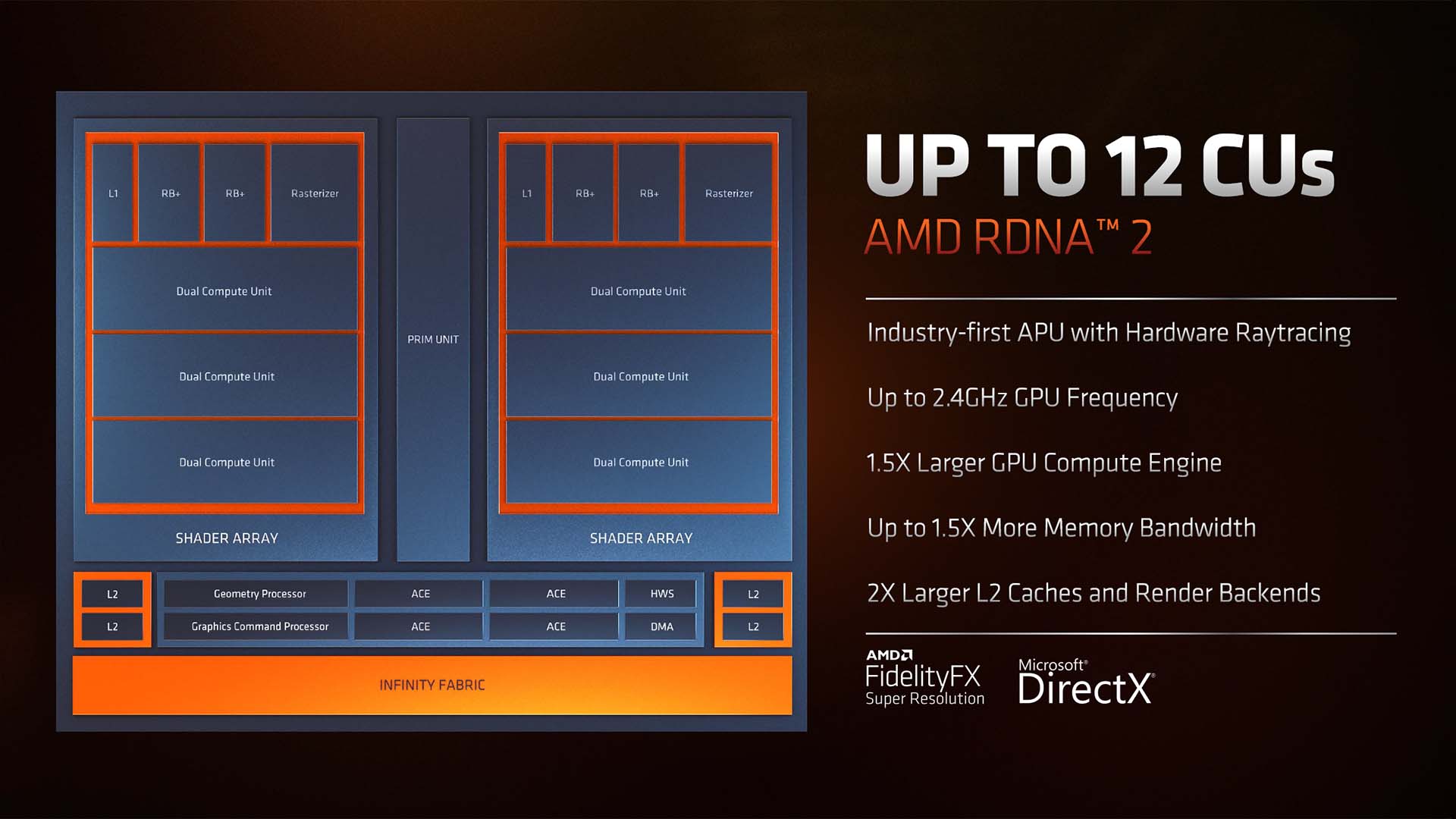
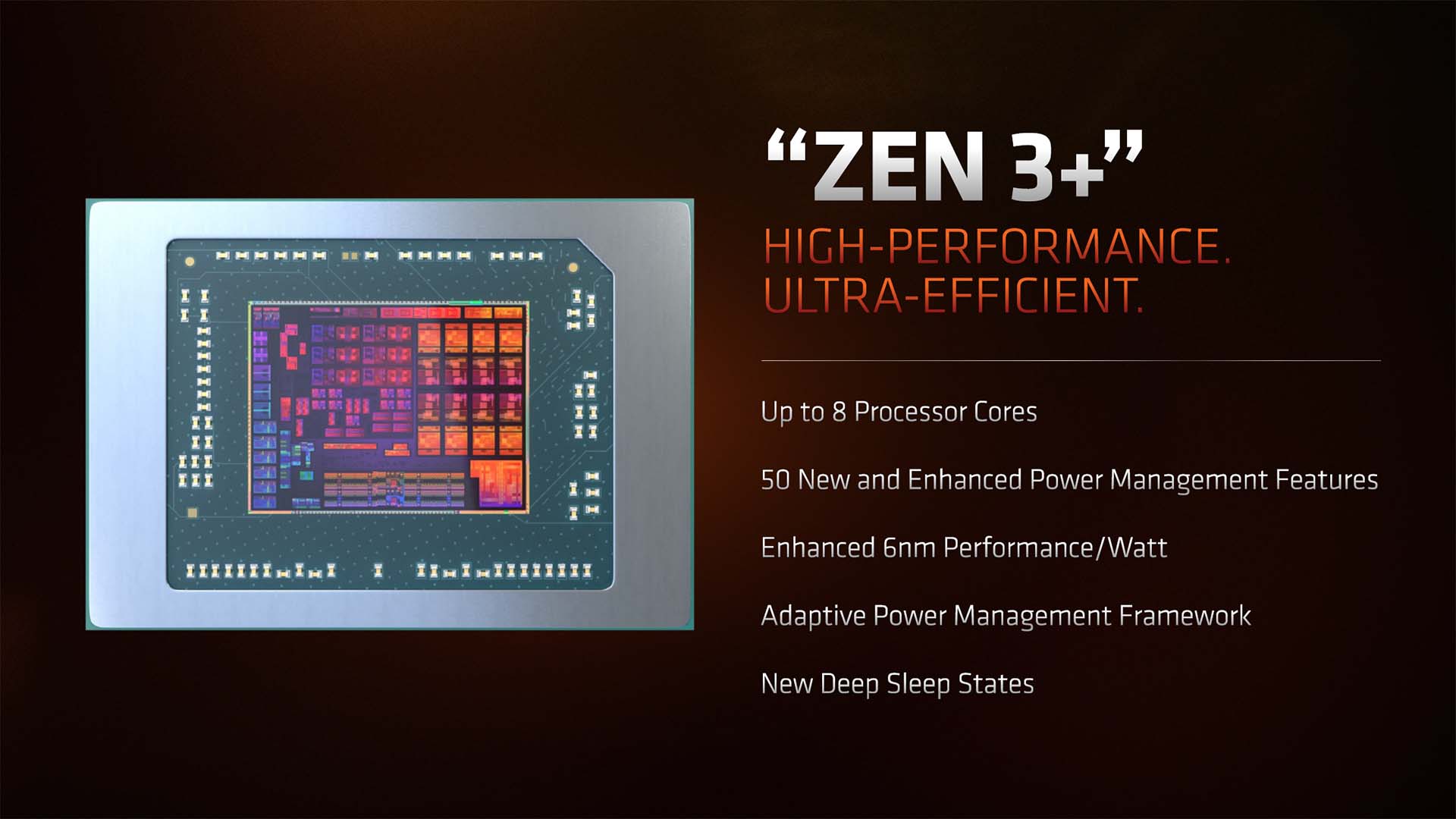
| Header Cell - Column 0 | Architecture | Cores/threads | Max boost / base clock (GHz) | L2 + L3 cache | GPU cores (max boost) | Node | TDP |
|---|---|---|---|---|---|---|---|
| Ryzen 9 6980HX | Zen 3+ / RDNA 2 | 8/16 | 5.0 (3.3) | 20MB | 12 (2.4GHz) | 6nm | 45W+ |
| Ryzen 9 6980HS | Zen 3+ / RDNA 2 | 8/16 | 5.0 (3.3) | 20MB | 12 (2.4GHz) | 6nm | 35W |
| Ryzen 9 6900HX | Zen 3+ / RDNA 2 | 8/16 | 4.9 (3.3) | 20MB | 12 (2.4GHz) | 6nm | 45W+ |
| Ryzen 9 6900HS | Zen 3+ / RDNA 2 | 8/16 | 4.9 (3.3) | 20MB | 12 (2.4GHz) | 6nm | 35W |
| Ryzen 7 6800H | Zen 3+ / RDNA 2 | 8/16 | 4.7 (3.2) | 20MB | 12 (2.4GHz) | 6nm | 45W |
| Ryzen 7 6800HS | Zen 3+ / RDNA 2 | 8/16 | 4.7 (3.2) | 20MB | 12 (2.4GHz) | 6nm | 35W |
| Ryzen 5 6600H | Zen 3+ / RDNA 2 | 6/12 | 4.5 (3.3) | 19MB | 6 (1.9GHz) | 6nm | 45W |
| Ryzen 5 6600HS | Zen 3+ / RDNA 2 | 6/12 | 4.5 (3.3) | 19MB | 6 (1.9GHz) | 6nm | 35W |
| -- | Row 8 - Cell 1 | Row 8 - Cell 2 | Row 8 - Cell 3 | Row 8 - Cell 4 | Row 8 - Cell 5 | Row 8 - Cell 6 | Row 8 - Cell 7 |
| Ryzen 7 6800U | Zen 3+ / RDNA 2 | 8/16 | 4.7 (2.7) | 20MB | 12 (2.2GHz) | 6nm | 15–28W |
| Ryzen 5 6600U | Zen 3+ / RDNA 2 | 6/12 | 4.5 (2.9) | 19MB | 6 (1.9GHz) | 6nm | 15–28W |
| Ryzen 7 5825U | Zen 3 / Vega | 8/16 | 4.5 (2.0) | 20MB | 8 (1.8GHz) | 7nm | 15W |
| Ryzen 5 5625U | Zen 3 / Vega | 6/12 | 4.3 (2.3) | 19MB | 7 (1.6GHz) | 7nm | 15W |
| Ryzen 3 5425U | Zen 3 / Vega | 4/8 | 4.1 (2.7) | 10MB | 6 (1.5GHz) | 7nm | 15W |
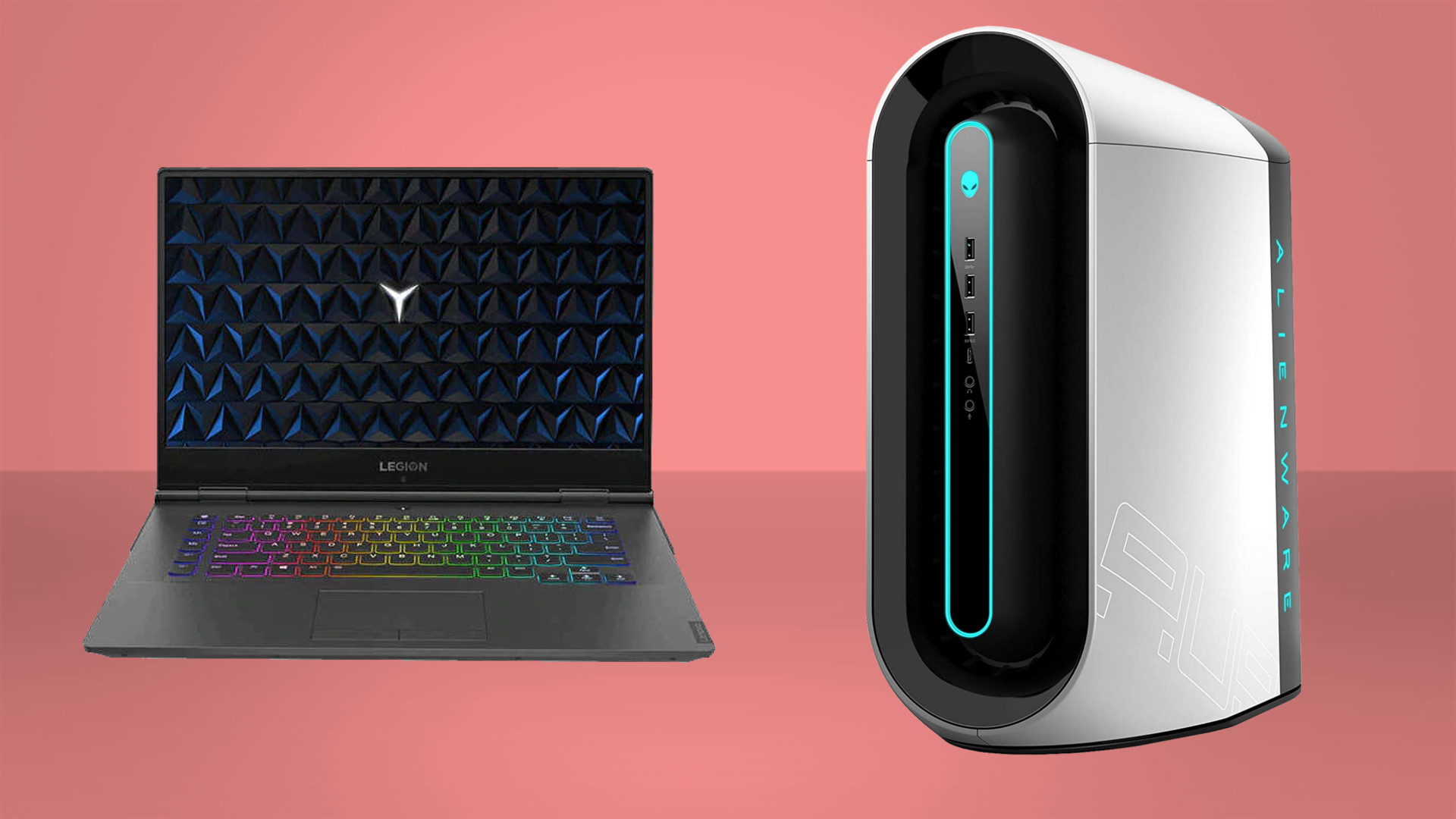
Best gaming PC: the top pre-built machines from the pros
Best gaming laptop: perfect notebooks for mobile gaming
There are 50 new or enhanced power management features implemented since Ryzen 5000, too, for optimal battery life efficiency. The system management firmware is smarter, there are new deep sleep states, and AMD's adaptive power management delivers an "ultra efficient" package, AMD says.
Keep up to date with the most important stories and the best deals, as picked by the PC Gamer team.
Furthermore, AMD is bringing LPDDR5 memory support to its new chips, for that extra bandwidth, though it's the USB4 that sounds most interesting of all. That offers double the bandwidth of today's top USB ports, so pretty great for gaming on an external drive if that's your thing. There's also WiFi 6E support to keep you connected up, which is beginning to become the de facto standard for modern routers and laptops now. Though you will need both router and device support to get everything connected at top speeds.
AMD Ryzen 6000 gaming laptops should begin arriving from February, so keep an eye out for them then.

Jacob earned his first byline writing for his own tech blog. From there, he graduated to professionally breaking things as hardware writer at PCGamesN, and would go on to run the team as hardware editor. He joined PC Gamer's top staff as senior hardware editor before becoming managing editor of the hardware team, and you'll now find him reporting on the latest developments in the technology and gaming industries and testing the newest PC components.

